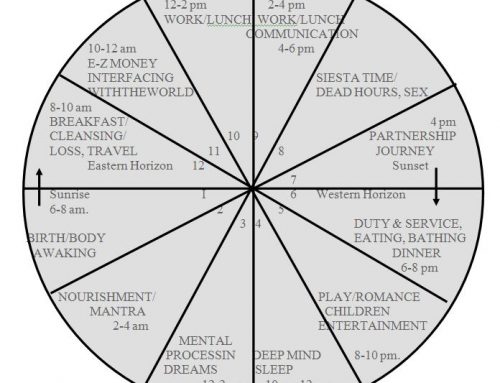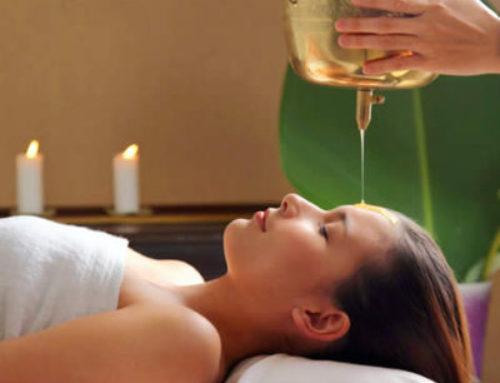This week I will fill in the final steps to eliminating toxic sludge and kindling radiant health and immunity.To recap, here are the first seven:
- Three Square Meals- The Eat All You Want diet
- The 5-2 Sugar Punch
- The Miracle Herb
- Kindle Agni- This Herb’s For You
- Respect The Rules- Food Combining
- Go Fast
- Punch UR Karma
If you haven’t tried these yet, click on the links above to read more. In the following blogs I will reveal the last three steps. Here we go!
8. Sleep
“Every important mistake I’ve made in my life, I’ve made because I was too tired.” -Bill Clinton
Sleep deprivation produces mental āma- toxic sludge in the brain. This is nothing new to medical research, which recognizes the destructive effects of sleep loss on cognitive function- or to the military, who use it as a form of torture. During sleep our bodies process the stress, emotions, and experiences of the day and safely release their toxic by-products. When the body is not allowed enough time for this, āma builds up. We already know that amyloid plaque, a form or āma in the brain, is a factor in Alzheimer’s disease and mental decline. But sleep loss also leads to systemic āma that clogs the arteries and leads to heart disease. Research shows that adequate sleep and an early bedtime (before 10 pm) reduces calcification of the blood vessels and proneness to cardiovascular issues.* This is exactly in line with Āyurvedic recommendations for sleep. *http://sleepeducation.blogspot.com/2009/05/early-bedtime-may-improve-your-heart.html http://jama.jamanetwork.com/article.aspx?articleid=183124
Many people resort to drugs to help them calm down, but diazepam and other tranquilizers prevent the neurons from discharging and rejuvenating our brains, thereby reducing much of the benefit of sleep and rest. Take time to meditate, relax, and get enough sleep in order to allow the brain to process the day’s emotions and discharge accumulated toxins. Emotions are stored in our neurochemistry, and when our brain’s chemicals get bogged down, they create both short and long term problems. Sleep. Meditate. Rest. Repeat.
Help for Sleep
“Insomnia is an uncommonly common disorder in the modern world”- Dr. Vasant Lad, The Complete Book of Ayurvedic Home Remedies
*Breathing for Life is key to relaxing your mind and easing stress, which will give you a good night’s sleep.
*Putting oil on the soles of your feet at bedtime and regular oil massage also work well to help you sleep.
*Netra basti and Shirodhara (pgs. and ) are great for calming the mind and inducing altered states of awareness, including deep sleep.
*Try warm milk at bedtime with a pinch of nutmeg. Also, garlic milk works well: gently bring to a boil a cup of milk and one clove of chopped garlic. Let cool and drink before bedtime.
For additional tips and home remedies, refer to Dr. Lad’s Complete Book of Ayurvedic Home Remedies
9. Exercise
If you haven’t heard it yet, exercise improves sex and health by burning āma and kindling agni. When your muscles ‘feel the burn,’ they are also melting āma, squeezing out toxins, and galvanizing your metabolism to get rid of waste. Regular rather than once in a while exercise is better because it trains your metabolism to be an āma-burning machine. If you don’t have time or a gym membership, the two best movements for men are push ups and the snatch, which you can both do at home. For women, squatting and the bridge or plank poses are excellent. Yoga and dance are generally the best exercises for women because Nature moves in a spiral. Galaxies, flowers and water are curvilinear- it makes sense to imitate nature’s movements with pracitces like yoga, bellydance and hula.
Push Ups
When performing the push up, it is important to ‘grab the ground’ with your hands and try to pull yourself down, instead of falling into the movement. Pulling yourself engages the latissimus muscles of your back and creates stability.
Also, try this technique for super rock-hard push ups: While in normal push up position, squeeze your glutes and hold. Then tense up every muscle in your body, from your toes, quadriceps, abdominals, trapezius and latissimus as well as your hands. You can even tighten the muscles in your face, but don’t clench your teeth. With this ‘tight as a bowstring’ configuration, pull yourself down and begin your push ups. You should only be able to do a little more than half of your normal amount while holding this tension. When finished, relax your body completely and move around or stretch.
During any intense exercise, particularly ‘rock-hard’ pushups, you can incorporate the Lion’s Breath for maximum results: Stick your tongue out, lift your eyebrows, roll your eyes up and exhale to a low hiss as you push up. This is great for releasing pent-up anger, frustration or unexpressed emotions. Doing Lion’s Breath during the contraction portion of an exercise will help you squeeze out extra reps while squeezing your muscles to the max!
Tensing your muscles this way is like wringing a dirty dish cloth- it squeezes toxins out of your system, and teaches your body strength. Strength is a skill, and old time bodybuilders used to practice these tension and release exercises in order to build cohesiveness in their tendons, ligaments and muscles. Women can do the same thing while performing plank pose. Squeezing every muscle in your body teaches self-control and awareness of your body. Start with ten seconds of this ‘rock hard’ plank and work up to twenty seconds at a time. Do at least three repetitions.
The squat is no different. When I taught clients this movement I used to emphasize that the most important muscle in the squat is the abdomen. They didn’t believe me… until they tried it. If you don’t have a tight stomach while squatting, your core becomes compromised, and you can’t lift the weight, risking injury and losing strength. As you reach the bottom of the squat, squeeze your abs super tight and let them push you up. It sounds counter-intuitive, but with practice you will see that the abdominals are key to proper squats- and if done right, they get a great workout too!
According to Āyurveda, ear wax, nasal crust, and smegma are waste products of the muscular system. If you find these accumulating in your body, it’s time to fire up your muscles and exercise. Working out also helps to flush out mental āma and is one of the best ways to refresh the mind, especially for Educator types who are not always fond of exercise. Along with prāṇāyāma (see “Breathe for Life”) movement is the best medicine for fighting depression, loneliness, and hormonal imbalances.
Time to hit the pot- the Neti Pot
If you wake up with nasal crust, or have difficulty breathing or blocked sinuses, consider the yogic practice of neti, or nasal irrigation. In addition to exercise, nasal irrigation using saline water clears out stuffiness and congestion and gives relief from allergy symptoms as well. If you suffer from any of these, doing neti will be a revelation. To see it properly done, watch Cory Tixier demonstrate it beautifully here. You can add xylitol to the saline water for a nice healing touch!
The right amount of exercise depends upon your body type, but as a general rule, when your armpits, temples, and nape of the neck generate a light sweat, you have reached your limit. To some of us this is barely a warm up, but āyurveda says that harsh exercise is not good for long-term health. Recent studies seem to confirm this and the idea that more frequent but less intense training is better than long bouts done once or twice a week. Vāta body types should especially observe the light sweat rule, whereas hardy kaphas, who may sweat even standing still, probably need more stimulation to move and burn āma. Remember, we are treating exercise as medicine and a tool for detoxification and rejuvenation. When done right, along with the other recommendations on this website it will prolong your life, not shorten it. For athletes and others for whom exercise is recreation or a profession, higher intensities are normal- but note that these also tax the body instead of nourishing it, and there is a price to pay for doing them. As long as you’re okay with this exchange, and feel that sport gives back something in return for the toll it takes on your body, then you should be okay with the consequences.
The key to proper exercise performance is your breath. Shallow, upper chest breathing activates our stress response- just like being startled makes the body think fight or flight. On the other hand, deep, lower-lobe breathing that expands the rib cage and activates our parasympathetic nervous system creates a calm, stress-free and anabolic environment. In his book Body, Mind, & Sport, Dr. John Douillard explains the studies behind this and how to consistently achieve the ‘runner’s high’ using your breath as guide. He advocates what he calls ‘Darth Vader Breath’ or ujjayi prāṇāyāma which you can learn on your own or by consulting a yoga professional.
Ujjayi entails breathing in and out through your nose, but during the exhale constricting your epiglottis slightly to create a hhhhhh hissing sound in the back of your throat. This type of breathing ensures that you are oxygenating the lower lobes of your lungs and encouraging your body to burn fat as a fuel. It is also a guideline for exercise. When you have to open your mouth to breathe, you are pushing too hard; reduce your exercise intensity and work up to being able to breathe through your nose using the ‘Darth Vader Breath’ even while running or working out at full capacity. This will be a revelation for your body and mind. You should perform ujjayi during all of the exercises outlined in this section. For more information on proper exercise and breathing, read this article: http://lifespa.com/enjoy-exercise-every-time/








Hello Simonji! Thank you for this great information on ama. I think I heard Dr. Lad say that if you exercise too heavily when there is ama in the system, it pushes the ama into the deep tissues. Do you have anything to write about that? Sorry if I missed that somewhere in the article. Namaste, Julia
Yes that’s absolutely true. That’s why the ‘light sweat on the brow’ rule for exercise is so important- especially in the beginning. Later, as your body burns away ama you can increase intensity. Also, that’s why it’s optimal to follow the other nine recommendations on the list; exercise is just one piece of the puzzle!